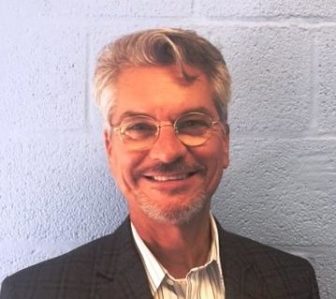 I am a long-time advocate for how the power of neuroscience can transform the youth-serving profession. When combined with a commitment to putting the needs of youth first and a sizable dose of courageous leadership, the insights and practical guidance provided by brain research can have remarkable results. A prominent example of the transformational application of this “secret recipe” can be found at the Sacramento County (California) Youth Detention Facility (YDF).
I am a long-time advocate for how the power of neuroscience can transform the youth-serving profession. When combined with a commitment to putting the needs of youth first and a sizable dose of courageous leadership, the insights and practical guidance provided by brain research can have remarkable results. A prominent example of the transformational application of this “secret recipe” can be found at the Sacramento County (California) Youth Detention Facility (YDF).
In 2010, Sacramento County Youth Detention Facility was operating on a point system also known as a “token economy.” It was not working. The YDF culture in the 400-bed facility was grounded on long-established practices that were more punitive than rehabilitative in their design.
Youth injuries were a concern, staff morale was low and trauma-informed care conspicuously absent. Room confinement and extended periods of isolation were often the norm. Worker’s compensation claims were high. Additionally, the facility was under a court-ordered consent decree to change. But change to what?
Neuroscience on the development of the adolescent brain and the impact of traumatic stress on that development became the new foundation for YDF’s approach to serving the youth in its care. YDF dedicated itself to becoming brain-friendly and developmentally informed. The facility began by training its staff on the neuroscience of development, the impact of chronic and traumatic stress on the adolescent brain and the strategies and interventions that focus on healing youth instead of punishing them.
Armed with these new insights and a toolkit of strategies to foster positive change, staff at all levels of the YDF committed to putting youth first and aligning policies, practices and mindsets with that commitment. Most important, they recognized that a facility that was punitive, judgmental, nonstimulating and threatening could not possibly help the brains of its residents get better. So they concentrated on designing and implementing a culture that emphasized safety, relationship and positive change. Then things really started to happen.
A interdisciplinary team of YDF staff began meeting regularly to plan the scrapping of the old point system in favor of a “behavior motivation” model that promotes positive feedback, relationship-building and reward. They called themselves the Compass Team because they were setting a new direction for the workplace norms at YDF. They began to redesign the YDF culture to concentrate on building a safe, healthy and enriched community that modeled for youth a new experience of what community could be.
The Compass Team engaged the entire staff in creating a Culture Card and having daily Culture Card meetings on each shift. The Culture Card listed in writing the workplace culture that YDF desired. Each day, a facilitator would highlight one of these workplace culture expectations and illustrate what the desired behavior actually looked like on the floor with youth. This supported a rapid yet consistent culture shift that built momentum with every culture card meeting.
Once the desired culture was articulated, shared and illustrated, YDF’s talented staff began implementing programs and practices consistent with the aspirational culture. Several Multi-Sensory De-Escalation Rooms (MSDRs) were installed in the facility. A unique, first-of-its-kind in detention tool, MSDRs provide youth with a safe, therapeutic space in which to learn how to calm and self-regulate in times of crisis. With consistent use of the MSDR, residents learn to proactively use the MSDR to prevent crisis from occurring in the first place.
Partnerships with community agencies like the Boys and Girls Club resulted in a B&GC location being established inside the YDF. B&GC provided significant enrichment activities and relationship opportunities to the residents. Therapy dogs were brought into the YDF common areas and living units to reduce stress, increase delight and strengthen relationship skills. The physical environment inside YDF was transformed from a drab, correctional-inspired, institutional motif to an amazing and uplifting artscape. The neuroscience courses that began this transformation are now taught by YDF staff who each participated in a rigorous certification program.
The facility has transformed. At the start of the change, the YDF had multiple daily use-of-force incidents, at times five to six per day. Today, YDF has entire months in which use-of-force incidents are in the single digits. Room confinement and long-term isolation have been greatly reduced. Both resident and staff injuries are minimal. Morale is high. Suffering is being eased. A sense of hope and new possibilities permeates the building. It all started with learning about the brains of the youth served.
Frank Kros, MSW, JD, has served as a child care worker, child protection investigator, children’s home administrator, consultant, college professor, attorney and speaker. He earned his bachelor’s degree in psychology from Creighton University, his master’s in social work from the University of Nebraska-Omaha and his juris doctor from Notre Dame Law School. He currently serves as executive vice president and chief operating officer of The Children’s Guild in Maryland and president of the Upside Down Organization, a training and consultation service for child-serving organizations.































